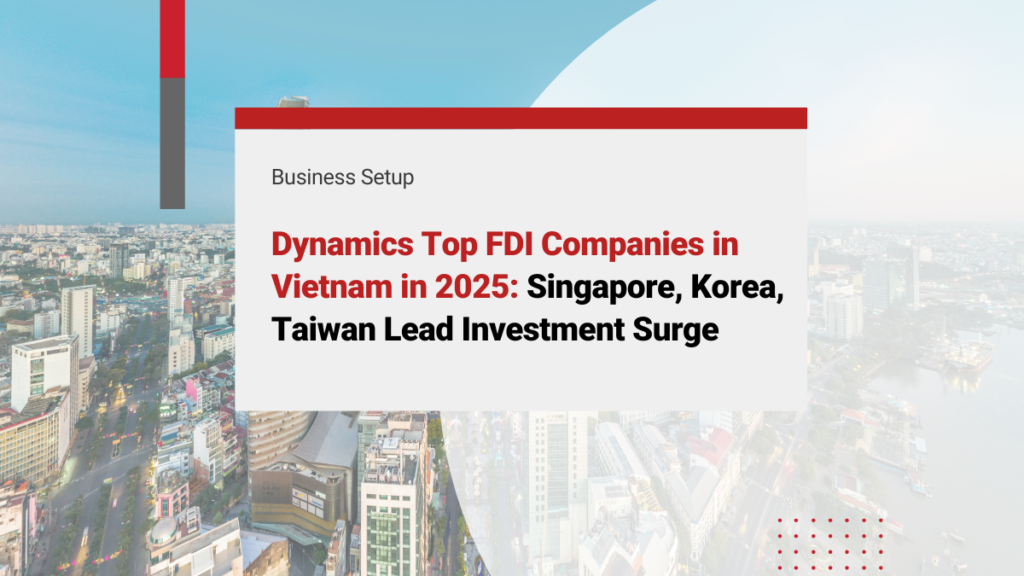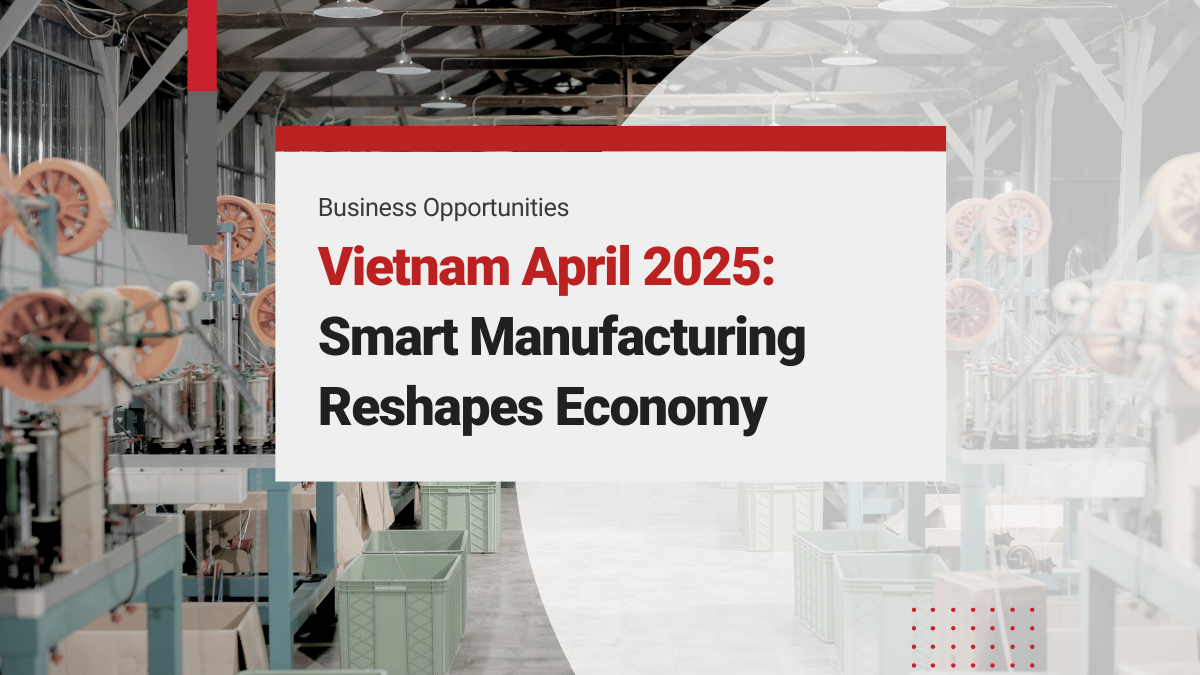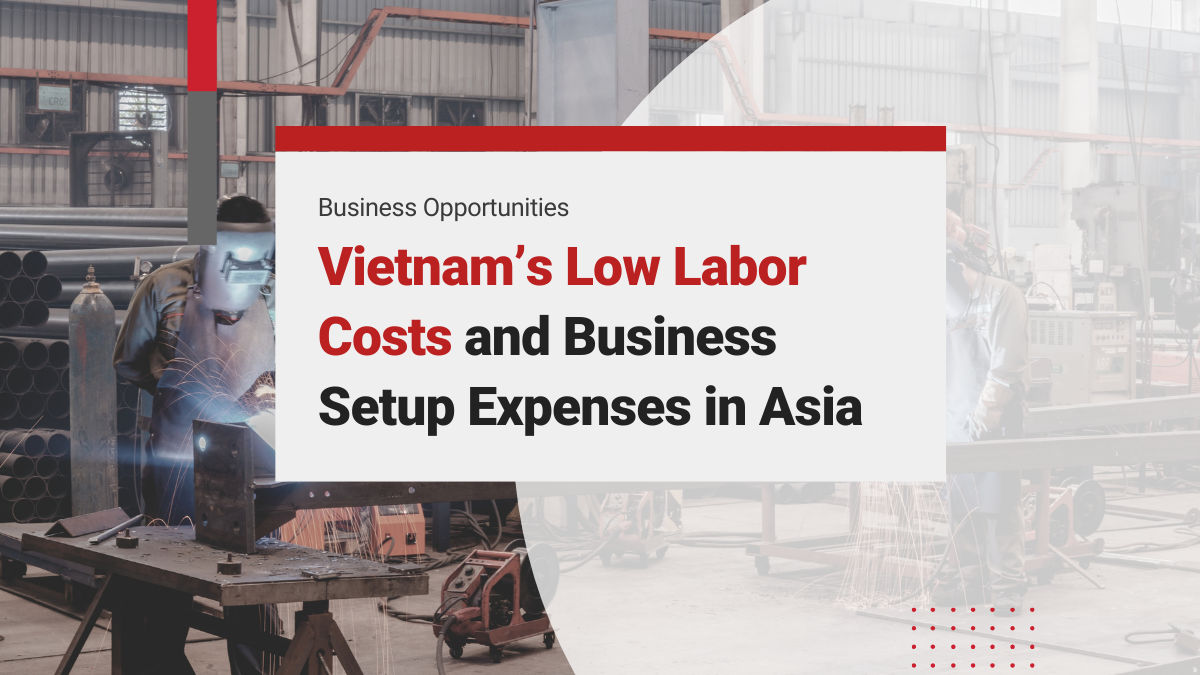Vietnam’s ascent as a Southeast Asian manufacturing and trade hub has been underpinned by robust foreign direct investment (FDI), with FDI companies in Vietnam playing a central role in shaping the country’s industrial and export capacity. In 2024, total FDI pledges reached approximately $38.2 billion, with actual disbursements hitting a record $25.35 billion (up 9.4% year-on-year).
While overall registered FDI was marginally lower than in 2023, the surge in capital from Asian economies has solidified the position of many FDI companies in Vietnam. Investors from Singapore, South Korea, China, Japan, Malaysia, and Taiwan collectively accounted for nearly three-quarters of all FDI inflows — dominating both the number of new projects and total investment value. This article analyzes key trends, top FDI company in Vietnam contributors, and sectoral priorities as of August 2025.
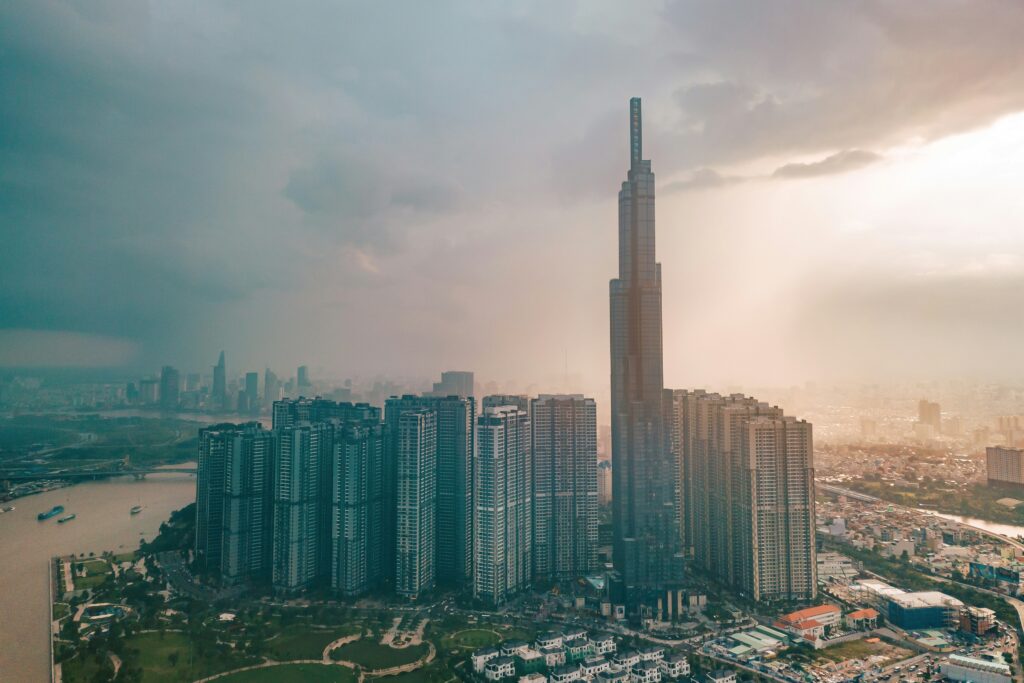
Singapore: Capital-Intensive Innovation Leader
Singapore solidified its position as Vietnam’s top FDI source in 2024. Many of the most strategic FDI companies in Vietnam today are Singaporean-led, including Sembcorp, CapitaLand, and Sea Group. FDI from Singapore totaled nearly $10.2 billion, about 26–29% of Vietnam’s FDI that year. This represented a surge of over 30% from 2023 levels.
Cumulatively, Singapore’s investments in Vietnam now exceed $84 billion across roughly 3,950 projects, making it Vietnam’s second-largest foreign investor overall (after South Korea). Notably, about two-thirds of Singapore’s 2024 capital went into new projects, with the rest channelled into expansions of existing operations. This mix signals both fresh investment and sustained confidence via reinvestment.
Read more: Business Entities in Vietnam for Foreign Investors – explore options like LLCs, JSCs, or representative offices for new FDI projects.
Sectoral focus
| Sector | Key Projects / Initiatives | Investment Amount | Companies Involved | Strategic Relevance for Vietnam |
| Electronics Manufacturing | Expansion of VSIP Nghe An to host new semiconductor assembly plants | Not disclosed (multi-million) | Sembcorp, VSIP, unnamed manufacturers | Supports Vietnam’s semiconductor packaging/testing goals and strengthens the role of FDI companies in Vietnam in high-tech manufacturing |
| Industrial Parks / Logistics | 18 active VSIPs across 13 provinces, hosting 900+ projects and employing 300,000+ workers | Cumulative investment exceeds US$17 billion | Sembcorp, Becamex IDC, Ascendas | Promotes regional industrialization, job creation, and export-oriented production |
| Real Estate (Smart Cities) | “Sycamore” urban smart city project in Binh Duong (CapitaLand) | S$1.12 billion (~US$800M) | CapitaLand Development | Addresses housing and infrastructure demand from growing middle class; promotes sustainable urbanization |
| Digital Economy / E-Commerce | Expansion of logistics hubs and fulfillment centers for cross-border e-commerce | ~US$200 million (est.) | Shopee (Sea Ltd.), Ninja Van | Facilitates Vietnam’s booming e-commerce market (GMV ~US$16B in 2024), boosts digital infrastructure |
| Renewable Energy | Solar farms in Quang Ngai, wind power ventures, energy storage pilots | ~US$600 million (Sembcorp Solar) | Sembcorp Industries, others | Contributes to Vietnam’s 12,000 MW solar and 47% renewable energy targets by 2030 |
Read more: Legal Advisory Services: Licensing & Corporate Secretary Support – essential for FDI companies launching large-scale real estate or infrastructure projects.
Strategic implications
High Contribution to GDP
Singaporean capital is estimated to contribute ~8% of Vietnam’s GDP, largely through:
- Export-oriented projects
- Industrial parks and manufacturing zones (e.g., VSIP network)
Industrial Know-How Transfer
- Flagship joint ventures like VSIP help bring in:
- Industrial park development expertise
- Sustainability practices and operational standards
Challenges in Local Integration
- Only ~12% of suppliers in VSIP zones are domestic firms
- This indicates limited local sourcing and technology transfer so far — a common issue across many FDI companies in Vietnam
South Korea: Electronics and Industrial Powerhouse
South Korea’s FDI companies in Vietnam, such as Samsung, LG, and Amkor, have collectively transformed Vietnam into a leading electronics export hub. Samsung alone produces 50% of its global smartphone output from Vietnam. By the end of 2024, Korean firms had invested over $92 billion across more than 10,100 projects in Vietnam, accounting for roughly 18% of Vietnam’s total registered FDI stock.
In 2024 alone, South Korean investors registered around $7.06 billion in Vietnam – a sharp increase of 37.5% year-on-year – making South Korea the second-largest source of FDI flows after Singapore. (If counting only new project registrations, South Korea contributed about $2.89 billion in new capital, or 14.6% of new FDI, in 2024, alongside major expansions of existing Korean projects. This continuing inflow underscores South Korea’s robust commitment to Vietnam even as global supply chains shift.
| Sector | Key Projects / Initiatives | Investment Amount | Companies Involved | Strategic Relevance for Vietnam |
| Electronics Manufacturing | Samsung’s 6 factories in Bac Ninh & Thai Nguyen producing 50% of global smartphones | ~US$22 billion (cumulative) | Samsung Electronics, Samsung Display | Contributes ~20% of Vietnam’s exports; solidifies Vietnam as a global smartphone export hub |
| OLED Display Production | Expansion of LG Display’s Hai Phong OLED complex | US$1 billion (2024), $5.65 billion total | LG Display | Supports tech exports diversification; high-value manufacturing for next-gen screens |
| Semiconductor Packaging | New advanced chip packaging plant in Bac Ninh targeting 5nm chips | US$1.6 billion | Amkor Technology | Aligns with Vietnam’s semiconductor ambitions; creates high-skilled jobs and technology transfer |
| Steel / Heavy Industry | Cold-rolled steel and construction steel production in Ba Ria–Vũng Tàu | Not publicly disclosed | POSCO | Supplies raw materials for manufacturing and construction; supports domestic infrastructure growth |
| Automotive Components | Automotive parts, electronics, and assembly plants for domestic & export markets | ~US$300 million+ (est.) | Hyundai Motor, Hyundai Mobis | Boosts Vietnam’s auto industry and regional supply chain integration |
| Renewable Energy | Wind energy projects in central provinces (e.g., Quang Tri), solar feasibility studies | ~US$500 million+ (est.) | SK Group, others | Supports national renewable target (47% of power from renewables by 2030); green investment driver |
Strategic implications
Massive Export Contribution
- South Korean firms and their suppliers are responsible for ~30% of Vietnam’s total exports
- Samsung alone contributes ~20% of national export turnover
Large-Scale Job Creation
- Korean-led FDI companies in Vietnam help employ ~8.5 million workers
- That’s about 23% of Vietnam’s formal workforce
Key Challenge: Limited Local Value-Add
- 80–85% of export inputs are imported, as foreign firms rely on global supply chains
- This creates an “enclave effect” where local firms are excluded from upstream activities
Innovation Gaps
- Vietnam’s R&D spending: ~0.4% of GDP
- South Korea’s R&D spending: 4.8%+ of GDP
- Vietnam’s labor productivity is only ~27% of Korea’s — highlighting a need to boost innovation capacity
Read more: Employer of Record Services – expand in Vietnam without an entity – ideal for Korean and global firms seeking fast, compliant hiring.
China: High-Tech Manufacturing and Supply Chain Diversification
Chinese FDI companies in Vietnam tend to favor mid-sized manufacturing and electronics assembly projects. With over 950 new projects launched in 2024 alone, China is the leading source of new investment licenses. Chinese firms registered about US$4.73 billion of FDI in Vietnam in 2024, a slight 3% increase from the previous year.
This brought China’s cumulative FDI in Vietnam to roughly US$30.8 billion (1988–2024) across thousands of projects. Notably, China accounted for 28.3% of all new foreign projects in Vietnam in 2024 – the highest of any country. In fact, Chinese investors launched 955 new projects in 2024 alone, reflecting a strategy of numerous mid-sized ventures in Vietnam. While Chinese investment by value still lags behind South Korea or Singapore, its rapid growth and focus on manufacturing make it highly influential.
| Sector | Key Projects / Initiatives | Investment Amount | Companies Involved | Strategic Relevance for Vietnam |
| Electronics Manufacturing | Luxshare’s new factory in Bắc Giang for wireless electronics (e.g., Apple earbuds) | US$330 million | Luxshare Precision | Boosts Vietnam’s position in Apple’s supply chain and high-tech exports |
| Electronics Assembly | Goertek’s new plant in Nghệ An for electronics manufacturing | US$280 million | Goertek Inc. | Expands Vietnam’s mid-tier tech production footprint |
| 5G Components / PCB | Victory Giant Technology’s PCB plant in Bắc Ninh producing telecom and automotive components | US$520 million | Victory Giant Technology | Supports Vietnam’s move into upstream electronics and 5G tech |
| Textiles & Garments | New garment-textile industrial park in Phú Thọ; expected $1B in annual export value | US$300 million | Shenzhou International | Leverages CPTPP & EVFTA for global apparel exports; creates labor-intensive jobs |
| Infrastructure (Railway) | Proposed Hanoi–Lào Cai–Haiphong rail link to Kunming (China); feasibility phase in 2024 | Est. US$7 billion (total) | China Railway, others (TBD) | Enhances trade/logistics connectivity between Vietnam and southern China |
| Solar PV Manufacturing | Solar panel factory in Vietnam to serve global markets and avoid U.S. tariffs | US$400 million | Trina Solar, Longi | Establishes Vietnam as a solar equipment export base; supports clean energy supply chain goals |
Strategic implications
Strong Contribution to Export Growth
- Chinese-invested enterprises account for ~15% of Vietnam’s recent export growth
- Much of this growth comes from upstream supply chains that feed into other FDI manufacturers
Broad Geographic Reach
- Many new Chinese projects are led by small and medium-sized enterprises (SMEs)
- These SMEs bring capital to non-core provinces, including:
- Border areas
- Central and hinterland regions
Geopolitical Sensitivities
- The U.S.–China trade war has pushed manufacturers toward Vietnam
- But this also creates uncertainty:
- If tensions ease, investment flows may shift away
- Chinese FDI is partially driven by short-term hedging strategies

Japan: Stable Investment and Infrastructure Partnerships
Japan has long been a stable and significant investor in Vietnam, known for high-quality projects and official development assistance (ODA). Japanese FDI companies in Vietnam are known for quality, sustainability, and human capital development. Their investments also complement Vietnam’s public infrastructure, with major support from JICA and private-sector giants like AEON and Mitsubishi. By 2024, Japan’s cumulative FDI in Vietnam was estimated at around US$74 billion across over 5,300 projects (placing it among the top three investors overall).
In terms of new investment, Japan saw a resurgence recently: in 2023, Japanese firms registered $6.57 billion of FDI in Vietnam (a 37% jump from 2022) according to Vietnam’s Ministry of Planning and Investment, and early 2024 continued that trend. For the first four months of 2024, Japan was Vietnam’s second-largest investor (after Singapore), with nearly $2.0 billion in FDI – about 22% of the total in that period. This suggests Japan’s full-year 2024 FDI likely reached around $3 billion (placing it 5th for the year, behind Hong Kong and others) – a plausible uptick given stronger Japan–Vietnam economic ties. Major Japanese projects span manufacturing, energy, and urban development.
Read more: Representative Office Vietnam – key legal exemptions & setup process – a strategic entry route for firms receiving public contracts or conducting feasibility studies.
| Sector | Key Projects / Initiatives | Investment Amount | Companies Involved | Strategic Relevance for Vietnam |
| Automotive & Machinery | Vehicle and motorbike manufacturing; expansion of assembly lines in Vĩnh Phúc | Not disclosed (multi-billion cumulative) | Toyota, Honda, Mitsubishi Motors, Denso, Toyota Boshoku | Builds Vietnam’s automotive supply chain; supports industrial upgrading |
| Electronics & Appliances | Panasonic’s new smart appliance factory in Bình Dương producing energy-efficient products | US$200 million | Panasonic | Diversifies exports, promotes green and smart manufacturing |
| Petrochemical / Refining | Nghi Sơn Refinery & Petrochemical Complex in Thanh Hóa (operational) | US$9 billion (cumulative) | Idemitsu, Mitsui, Kuwait Petroleum | Meets 33% of Vietnam’s refined petroleum demand; anchors energy security |
| Energy / Renewables | Gas-fired power, offshore wind feasibility studies in central and southern Vietnam | Not disclosed | Marubeni, JERA, others | Supports energy diversification and national renewable energy roadmap (47% by 2030 target) |
| Urban Infrastructure / Real Estate | Smart City development in Đông Anh district, north Hanoi; mixed-use with green and smart tech | Multi-billion (est.) | Mitsubishi Corporation, Sumitomo Corporation | Enhances urbanization, smart infrastructure, and housing for Vietnam’s middle class |
| Industrial Parks | Development and operation of Thăng Long IPs across northern provinces | Not disclosed (long-term projects) | Sumitomo Corporation | Attracts Japanese SMEs, supports export-oriented manufacturing clusters |
| Retail / Consumer Market | AEON’s retail expansion; new mega-mall in Huế–Đà Nẵng region under construction | US$160+ million | AEON Mall Vietnam | Serves rising middle-class consumption; creates modern retail experiences |
| Logistics & Cold Chain | Joint ventures to develop cold chain, air cargo, and smart logistics | Not disclosed | Yamato, Sumitomo Warehouse, ANA Cargo | Enhances export logistics, food safety, and pharma distribution infrastructure |
| Public Infrastructure (ODA) | Metro lines in Hanoi & HCMC, water treatment, port upgrades (non-FDI but complementary) | US$23.5 billion+ (since 1992) | JICA (Japan International Cooperation Agency) | Improves Vietnam’s overall investment environment; reduces bottlenecks |
Strategic implications
Highly Stable and Development-Oriented
- Japanese investment is known for long-term stability and institutional quality
- It plays a key role in Vietnam’s industrial upgrading and urban infrastructure development
Strong Focus on Human Capital
- Around 65% of Japanese-invested projects include training or technology transfer programs
- This supports skill development in sectors like:
- Automotive engineering
- Urban planning
- Smart city infrastructure
Strategic Diversification of FDI Sources
- Japan acts as a counterbalance to Vietnam’s heavy reliance on Korean or Chinese capital
- The Japan–Vietnam Economic Partnership Agreement (EPA) and Extensive Strategic Partnership help:
- Insulate economic ties from political volatility
- Provide a legal framework for continued cooperation
Taiwan: Electronics and Supply Chain Catalyst
Taiwan’s contribution as an FDI company in Vietnam hub is most evident in electronics. Foxconn, Pegatron, and Compal are deeply embedded in Apple’s global supply chains — now shifting significantly toward Vietnam. Over the decades, Taiwanese FDI companies in Vietnam have invested roughly US$39–40 billion (cumulatively), making Taiwan one of Vietnam’s top five foreign investors by capital.
In 2024, Taiwan’s FDI in Vietnam is estimated at around $2.8 billion, driven by major projects in electronics manufacturing. This places Taiwan’s annual FDI on par with or slightly above Japan’s in some years, underscoring its importance. Notably, Vietnam Briefing reported that as of late 2023, “Taiwan ranks among the top investors” in Vietnam, buoyed by expanding tech investments.
| Sector | Key Projects / Initiatives | Investment Amount | Companies Involved | Strategic Relevance for Vietnam |
| Electronics Assembly | New factory in Thanh Hóa for electronics components | US$300 million | Foxconn (Hon Hai Precision) | Strengthens Vietnam’s role in Apple’s supply chain and global electronics exports |
| Computers & Devices | Assembly plant expansions for tablets and laptops in Hải Phòng and Vĩnh Phúc | US$400+ million (2024) | Pegatron, Compal Electronics | Diversifies export product mix; supports U.S.–China decoupling strategy |
| Server Components & PCBs | Assembly of printed circuit boards and server hardware | US$150 million (est.) | Wistron (now Tata-owned) | Builds upstream electronics capabilities; supports data center infrastructure growth |
| Semiconductor Packaging | New facility to produce chip substrates in Thạch Thất–Quốc Oai tech park | Not disclosed | ASE Technology Holding | Catalyzes semiconductor ecosystem; early move in Vietnam’s chip development strategy |
| Technical Textiles | Synthetic textile and dyeing mills to supply high-performance fabrics | US$200 million (Formosa) | Formosa Taffeta, Far Eastern New Century | Supports apparel exports under CPTPP; moves Vietnam up textile value chain |
| Industrial Real Estate | Expansion of EPZs and tech parks like Tân Thuận and Saigon South | Hundreds of millions | CT&D Group | Enables other multinational FDI; boosts infrastructure quality |
| Steel & Heavy Industry | Formosa Hà Tĩnh Steel Complex with integrated deep-sea port | US$10.5 billion (total) | Formosa Plastics Group | Vietnam’s largest FDI project to date; critical to industrialization, but has environmental concerns |
| Logistics & Export Processing | Development of processing zones with embedded logistics facilities | Part of industrial zone spend | CT&D, others | Improves export-readiness; links upstream manufacturing with port and customs infrastructure |
Strategic implications
Key Enabler of Vietnam’s Export Competitiveness
- Taiwanese-invested firms contribute to ~12% of Vietnam’s electronics exports
- This positions Taiwan as the second-largest electronics FDI contributor, after South Korea
Global Export Rankings Improved
- Thanks to FDI companies in Vietnam like Foxconn, Pegatron, and others:
- Vietnam became the #2 phone exporter globally
- Ranked #10 in electronics exports by 2024
Formation of Supply Chain Clusters
- Taiwanese FDI companies in Vietnam bring entire ecosystems of component suppliers:
- Example: When Foxconn or Pegatron set up in Bắc Giang or Hải Phòng, dozens of smaller Taiwanese and Chinese vendors followed
- These manufacturing clusters generate:
- Job creation
- Local procurement (where standards allow)
- Knowledge diffusion, although still limited

Conclusion
Vietnam’s ascent as a Southeast Asian industrial powerhouse has been fueled by a dynamic array of FDI companies in Vietnam, whose investments—ranging from Singapore’s high-tech infrastructure and smart-city projects to Korea’s electronics exports, China’s expansive mid-sized manufacturing ventures, Japan’s quality-driven industrial and urban development, and Taiwan’s electronics and heavy-industry clusters—have not only elevated its export capacity but also catalyzed its economic transformation. While these foreign investors have injected tens of billions into Vietnam’s manufacturing, infrastructure, and innovation ecosystems, the country must now focus on strengthening domestic supply chains, boosting SME integration, ramping up R&D, and building an ecosystem that ensures broader, long-term benefits from FDI.
| Country | 2024 Registered FDI | Cumulative FDI | Key Sectors & Projects |
| Singapore | $10.2 billion (confirmed) – #1 rank, ~27% share of FDI | ~$84 billion (≈3,950 projects) | High-tech manufacturing (electronics), industrial parks (VSIP network), real estate (smart cities), logistics, renewable energy (solar farms) |
| South Korea | $7.06 billion (confirmed) – #2 rank, 18.5% share | ~$92 billion (10,128 projects) | Electronics (Samsung’s ~$22 billion, 112k jobs), displays (LG’s $5.65 billion complex), semiconductors (Amkor $1.6 billion), steel, autos, energy (wind power) |
| China | $4.73 billion (confirmed) – #3 rank (by projects #1) | ~$30.8 billion (≈2,300 projects) | Electronics (PCB factory $520 million, phone assemblers), textiles ($300 million garment park), infrastructure (rail projects), solar panel manufacturing |
| Japan | ~$3 billion (estimated) – #5 rank in 2024 | ~$74 billion (≈5,300 projects) | Manufacturing (auto parts, electronics), energy (Nghi Sơn refinery $9 billion), smart infrastructure (metro lines via ODA), real estate (urban developments), retail (AEON malls) |
| Taiwan | ~$2.8 billion (estimated) – top 6 investor | ~$39 billion (≈3,200 projects) | Electronics & PCs (Foxconn, Pegatron $400 million+, Compal), textiles (Formosa $200 million synthetic textiles), steel (Formosa Hà Tĩnh $10.5 billion), semiconductors (ASE, others in chip packaging) |
